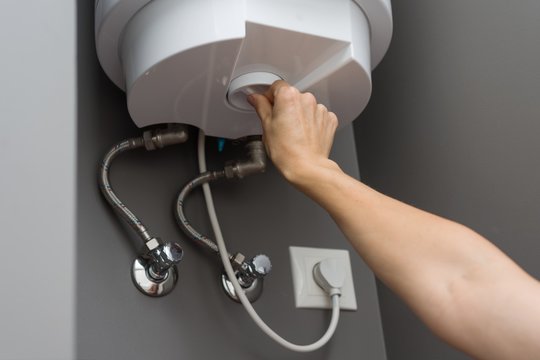Every person has their private idea about Tips on Maintaining a Water Heater.

Hot water is essential for daily convenience, whether it's for a refreshing shower or cleaning meals. To guarantee your warm water system runs successfully and lasts longer, routine maintenance is essential. This article provides practical ideas and insights on just how to keep your home's warm water system to prevent interruptions and costly repair work.
Introduction
Maintaining your home's hot water system might seem daunting, yet with a couple of straightforward actions, you can guarantee it runs smoothly for many years to find. This guide covers everything from understanding your warm water system to do it yourself upkeep ideas and understanding when to contact expert help.
Importance of Keeping Your Warm Water System
Routine maintenance not just expands the life-span of your hot water system but also guarantees it runs effectively. Overlooking maintenance can bring about lowered effectiveness, higher energy costs, and also premature failure of the system.
Indicators Your Warm Water System Needs Upkeep
Recognizing when your hot water system needs focus can stop major issues. Keep an eye out for indications such as inconsistent water temperature level, odd noises from the heating system, or rustic water.
Understanding Your Hot Water System
Prior to diving into upkeep jobs, it's useful to understand the standard components of your warm water system. Normally, this includes the hot water heater itself, pipes, anode poles, and temperature controls.
Monthly Upkeep Tasks
Regular month-to-month checks can assist capture minor issues prior to they escalate.
Purging the Water Heater
Purging your water heater gets rid of sediment build-up, enhancing efficiency and extending its life.
Checking and Changing Anode Rods
Anode rods stop corrosion inside the storage tank. Inspecting and changing them when worn out is vital.
Examining and Readjusting Temperature Setups
Adjusting the temperature level setups guarantees optimum performance and safety and security.
DIY Tips for Upkeep
You can perform a number of upkeep tasks on your own to maintain your hot water system in leading problem.
Checking for Leaks
Regularly inspect pipes and links for leaks, as these can result in water damages and higher expenses.
Checking Stress Relief Valves
Testing the stress safety valve ensures it operates appropriately and avoids too much stress buildup.
Protecting Pipelines
Insulating hot water pipelines lowers heat loss and can save power.
When to Call a Specialist
While DIY maintenance is useful, some problems call for professional knowledge.
Complicated Concerns Calling For Specialist Help
Examples include significant leakages, electric problems, or if your water heater is regularly underperforming.
Regular Specialist Upkeep Conveniences
Professional maintenance can include extensive examinations, tune-ups, and making certain compliance with safety standards.
Final thought
Normal maintenance of your home's hot water system is important for efficiency, durability, and expense savings. By complying with these ideas and understanding when to look for expert assistance, you can make sure a trusted supply of warm water without unforeseen interruptions.
How to Maintain an Instant Hot Water Heater
- Before tinkering with your hot water heater, make sure that it’s not powered on. You also have to turn off the main circuit breaker and shut off the main gas line to prevent accidents. Also turn off the water valves connected to your unit to prevent water from flowing into and out of the appliance.
- 2. When you’re done, you have to detach the purge valves’ caps. These look like the letter “T†and are situated on either side of the water valves. Doing so will release any pressure that has accumulated inside the valves while at the same time avoid hot water from shooting out and burning your skin.
- 3. When the purge valves’ caps are removed, you have to connect your hosing lines to the valves. Your unit should have come with three hoses but if it didn’t, you can purchase these things from any hardware or home repair shops. You can also get them from retail stores that sell water heating systems. Read the user’s manual and follow it to complete this task properly. When the hosing lines are connected, open the purge port’s valves.
- 4. You should never use harsh chemical cleaners or solutions when cleaning your unit. Make use of white vinegar instead. It should be undiluted and you’ll probably use about 2 gallons.
- 5. Now flush your water heater. This task should probably take about 40 minutes. We can’t give you specific directions for this because the procedure is carried out depending on the type, model and brand of your heater. With that being said, refer to the user’s manual.
- 6. When you’re done draining the unit, you have to turn off the purge port valves again. Remove the hosing lines that you earlier installed on each of the water valves. Put the valve caps (purge port) back in their respective places and be very careful so as not to damage the rubber discs that are found inside these caps.
- 7. Now that everything’s back in place, check your user’s manual again to find out how to reactivate your water heating system.
- 8. Once it is working, turn one of your hot water faucets on just to let air pass through the heater’s water supply pipes. Leave the tap on until water flows smoothly out of it.
https://www.orrplumbing.com/blog/2014/september/how-to-maintain-an-instant-hot-water-heater/

Do you appreciate reading about What Kind of Maintenance Do Water Heaters Need?? Try to leave a remark down below. We'd be glad to hear your views about this entry. We are looking forward that you come back again later on. You should take the time to share this write-up if you enjoyed it. Thank you so much for your time spent reading it.
Call Today
Comments on “Best Practices for Caring for Your Home's Hot Water System”